Interview: Cynosure Andrew-Lozano


1. How did you first get into Guitar-making? Did you have a mentor starting out?
A lot of my art is built on a multitude of influences and inspirations, surreality and reality, Modernism and Postmodernism…I am directly and indirectly influenced by everything I see and everything I think. From an early age, music was the most impactful source of expression and individuality that I could identity with. After growing up listening to bands from The Beatles, The Eurythmics, Led Zepplin, Gary Numan, Marilyn Manson and The Sex Pistols to name very few, I realized another world existed. A world full of unlimiting potential, self-expression and creative ideologies. I had always wanted to be a part of the music industry, whether that meant playing in a band or otherwise. After self-learning how to play the guitar from the rudimentary, yet fundamentally important, guitar scales to semi-advanced shredding, I knew this was a life-changing paradox. I wanted to create something new, not just conceptually but physically; and since I knew how to play Guitar, it just seemed so natural to progress into the mechanism of the instrument and its creation. I had never had the luxury of knowing Guitar-builders nor taking any wood-working/carpentry classes, but purely relying on my own skills, honing my talent, putting tools to wood and creating the objects that I had birthed in my mind. After much research I set out to build an Electric Guitar, focusing my study of research into the engineering aspects that made a Guitar what it is. In particular, using specified wood varieties for sound delivery, stylistics and conceptualization for aesthetic appreciation and technology for innovation. Utilizing my own designs based around ergonomic comfortability and visual specification, the Cyberpunk Guitar was born. Ultimately, in each of my Art creations is a systematic message and representation of reality expressed through a variety of metaphor - this progeny was concepted through the decadence and degradation of a dystopic future dichotomized with the ever-evolving obsession with technology and dataspheric information. Always maintaining its distinction as a fully-functional instrument, this Guitar no longer aspired to the demographic of cliche models, more a departure, an aberration of commonality and into the realm of surrealism and art.
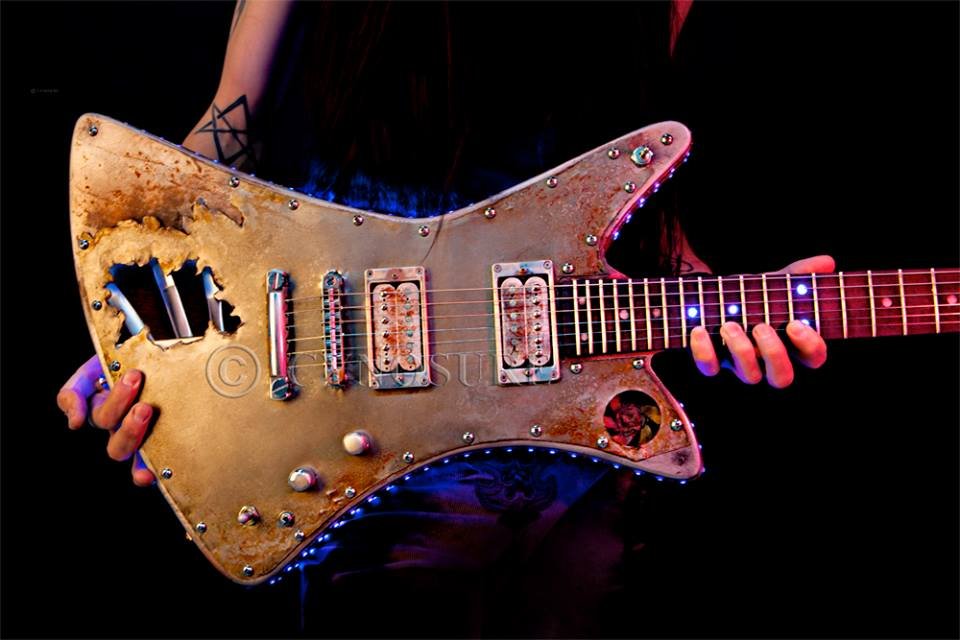
You are so good with detail, what's the preparation for it and is it okay to make mistakes with this kind of work?
I always spend a vast quantity of time designing my Art, but adhering continuously to the concept I choose to base it upon. From the construction of the shaping to the meticulous detailing of small intricacies, the Guitar exists on paper before the chisel carves the wood. Mistakes are common-practise and always accidental, yet inevitable…without the advantages of computerized assistance, human error is somewhat ineludible. Mistakes, dependent on their severity, can mostly be incorporated into the design, whether obvious or not…sometimes mistakes are serendipitous and add to the complicity of the concept.
Do you play your own self-made instruments?
Yes. In order to build Guitars, you need at least a basic acknowledgement of playability. The famous 20th century Russian composer, Stravinsky once said, "…Musical form is close to Mathematics - not perhaps to Mathematics itself, but certainly to something like Mathematical thinking and relationship…"
Guitar-building and Luthiery is indeed implicit within Mathematics as you are always calculating, using Mathematics in angles, design, scale, parameters, permutations and precise measurement. Playing the Guitar is much the same…to work as both a Luthier/Artist and a Musician utilizes the balance of a mutualistic-symbiosis needed to create my instruments.
You made your very first Acoustic Guitar recently. How is it different than making Electric ones?
Acoustic Guitars differ greatly in manufacture to Electric Guitars…undoubtedly, it is an entirely different process. From the design aspects to the manufacturing-tools needed, the Acoustic Guitar has its own set of ideals and idiosyncrasies…unlike the Electric Guitar, the Acoustic relies heavily on the vibrations of the wood-open space ratio. Without prior knowledge of Acoustics (and a deal of ignorance), I had to research and learn the construction methods, the wood parameters, shaping, thickness, bracing and countless other facets; building an Acoustic Guitar was a laborious challenge in itself. I built an Acoustic Guitar for the Herradura Tequila Barrel Art Program, in which I built my first Acoustic from a Tequila Barrel. featuring an abundance of synonymous metaphor to relate to the History and Culture of Mexico; fortuitously, the barrel is curved and as I composed its architecture of the guitar on the Mariachi Guitar (well known for its arched back), it was simply a matter of developing a stable design to incorporate and necessitate this feature. Electric Guitars depend ultimately on the 'Pickup' or 'Humbucker' which are essentially copper-coiled magnets that act as a Transformer, enheightening the sound output of the the plucked/strummed strings. this is the reason that you see Electric guitars built from an assortment of materials, such as wood, metal, composite, carbon-fiber, plastic, plexiglass/perspex, whereas the tonal qualities of the Acoustic Guitar are delivered by resonant, porous and malleable materials, namely, wood…thought, you can research and find the odd carbon-fiber or metal Acoustic but thats certainly not the norm.
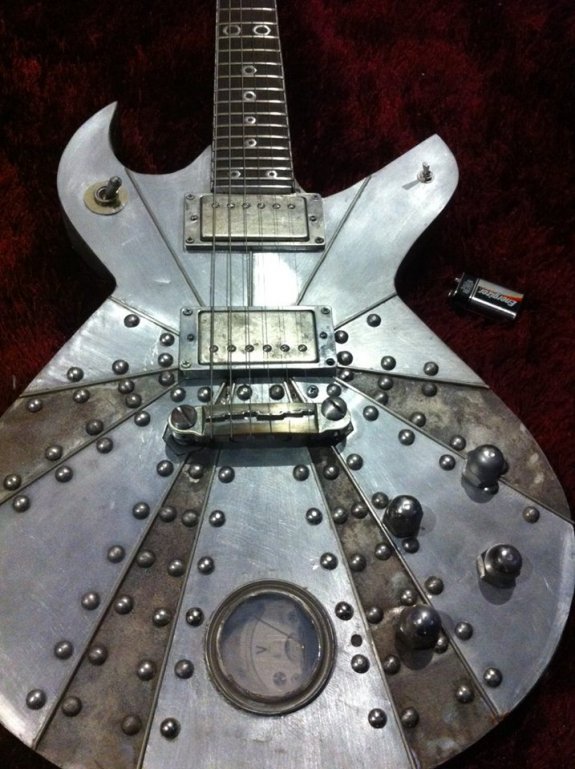

you mentioned that you work with themes of PostModernism/PostApocalyptica. Can you explain further, what do you do for keep-up with the trends of the industry?
The Guitars I build are unique in most ways. I do not adhere to any industry-standard method with an exception of the Mathematical scale length and composition of materials used to maximize the soundscape. My Guitars primarily focus on Industrial aspects, taking inspiration from surrealism, literature, cult film and music. Essentially, I create a physical representation of what is in my mind. Currently, I am working on a series of guitars each focused on the concept of Postmodernism and PostApocalyptica yet with individual thematics. For instance, the Cyberpunk Guitar, as aforementioned, is a 25.5" scale, Swamp Ash solid body with a real working fan, skeletal framing and light-up LED fret-markers…certainly not something you'd see in a Guitar shop!! the fan serves no purpose other than as a manneristic purveyance of Postmodernism…a stylized art-form that literally delivers a creation devoid of practicality or understanding. I do keep-up with trends of any industryas, to me, this is something of a conformist approach to produce inferior work. I have my own style, my own influences and inspirations and aspirations. I cannot accept categorical reasoning nor compartmetalized ways of thinking. I believe that life is quantum. Everything exists in fluidity and it is the greatest travesty of human nature to believe itself to be subject to socio-ritualistic methods and practices. I am an artist, a creator, an inventor, an innovator...not just in relation to guitars and the industry, but every single aspect of my life is unbound by limitation.
Making a Guitar is an art-form, but have you dabbled with more traditional fine-art mediums?
I am an artist firstly before anything. I do despise labels in any form as its not natural to me in any sense or demographic. I can produce fine art or plastic art or visual art, though whatever the medium, I consider myself an Artist without any prefix.
I used to paint in both Water Colour and Oil mediums, but was always attracted to more 'physical' realms of expression.
You may notice I am comfortable to use the term 'Artist'. This is because I do not consider it a label, per se, however, a means of identifying characteristic traits of professional approaches to such mediums. Art to me is GOD, and to me, GOD is Art. The definition of 'CYNOSURE' in the dictionary is "…something that attracts attention by its brilliance…". My name itself is another word for visual captivation, or 'Art'. In essence, Cynosure is Art and Art is Cynosure.
Any words for anyone wanting to get into Guitar-making?
Research. Create your own style and personal approaches. If you want to be recognized as an Artist or individual, you need to acquire a 'signature', both artistically and dynamically. Have you ever heard of the Charles Caleb Colton phrase, "…imitation is the sincerest form of flattery…"? Well, in the Art-world, this does not pass. If you want to be like me, be yourself.
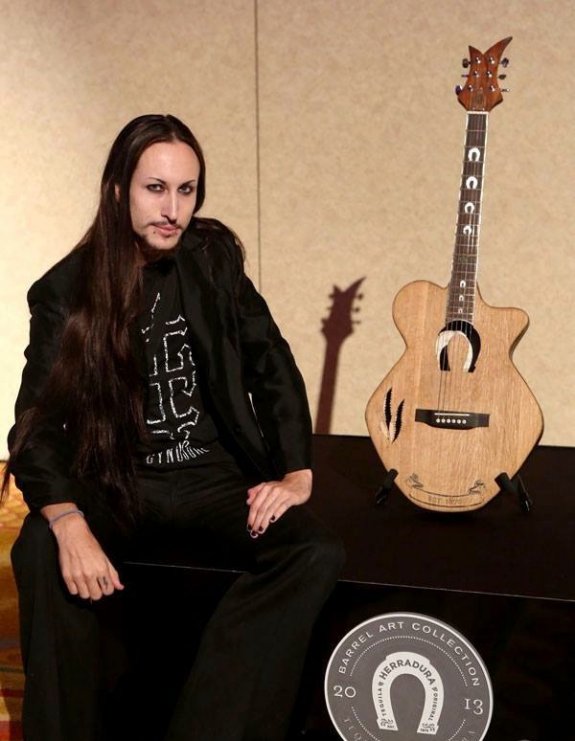
post modernism/PostApocalyptica art guitar maker Cynosure andrew-lozano takes some questions about his non-confirmist way of being.
Mic ho Mic

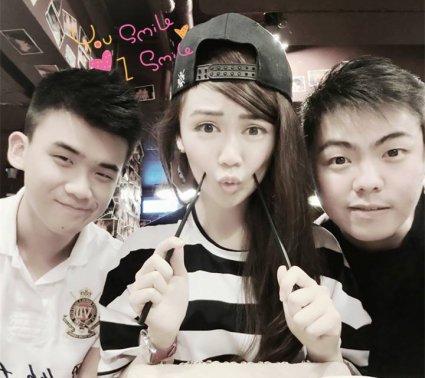






"Do whatever makes you happy, and
be with
whoever
makes
you
smile."

Local Crit - Wed, Nov. 27th 2013
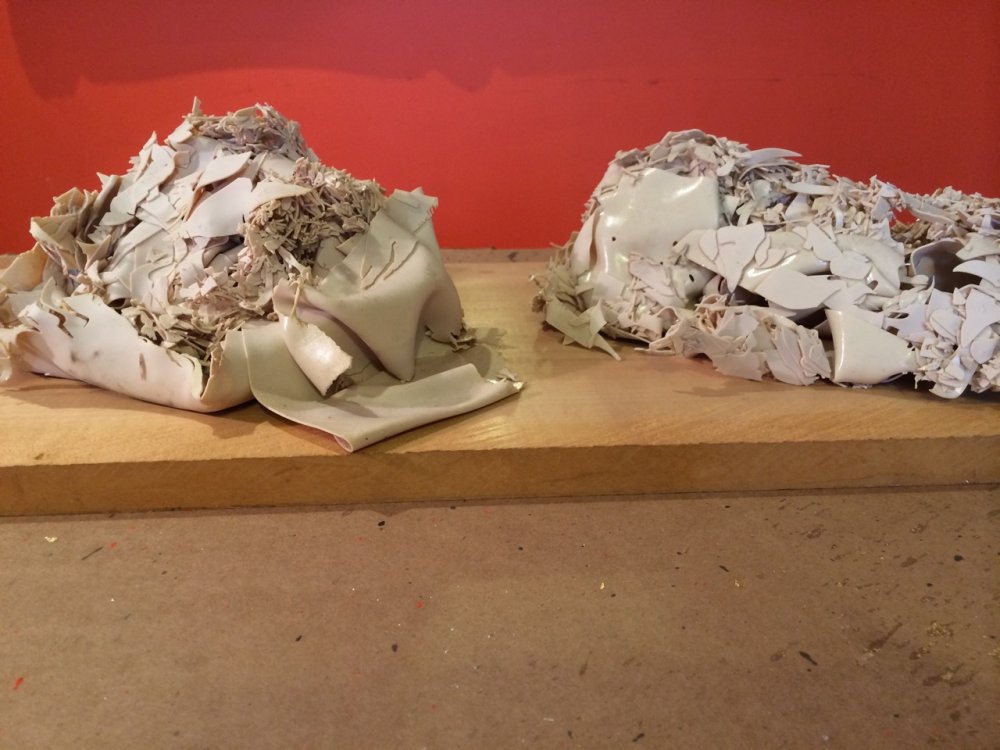
CAROL PRUSA
JILL HOTCHKISS
JEN STARK
NATALIA REPARAZ
FRANCIE BISCHOP GOOD
JESSIE LAINO
JESSY NITE
SHEILA ELIAS
NICOLE BURKO
MARIANA MONTEAGUDO
300 SW 1st Ave. Suite 1300 Fort Lauderdale, FL 33301 (at Las Olas Riverfront) / [email protected]
The Opportunity To Exist
In 2008, I wrote my first essay which was published on This I Believe.org, an international organization engaging people in writing, sharing, and discussing stories of the core values that guide our daily lives.
Now, with more than 100,000 collected essays from around the world, I would like to say that expressing our views in writing whether it is published or unpublished, it's a healthy exercise to uplift our consciousness to a higher level.
My spiritual path began on January 2003 when I met in Miami Lakes, Cuban-born author Lillian Monterrey at my restaurant, Sorrento's Pizza & Rest.
Her publishing company was located in the same neighborhood so I had asked her to come for lunch and to bring me 12 books, 6 in English and 6 in Spanish of her latest release entitled “Follow Your Instincts.”
I told her how inspiring was to read a book about things that I was eager to learn, things that your parents might have missed to teach you for whatever reason and I told her that I wanted to become a teacher or guide.
With a beautiful dedication Monterrey opened the doors in my own mind to the quest for knowledge and curiosity walking on the self-help path which I was interested to delve and to inquire into the most precious questions about life and existence.
The path was rough and difficult at first; I was disoriented with no clear focus.
I was already a young business owner who for the last 8 years had a lack of enthusiasm absorbed in the daily duties of running two restaurants and a catering business.
Within 3 months after I met her, I sold the businesses and invested some money in my post graduate studies.
A USGS scientist and FIU teacher and friend of mine named Michael Wacker suggested me to go for a bilingual journalism program, the only one in the nation at Florida International University.
In August 2003, I began my 2 year-study and in March 2005, I obtained my Master of Science in Mass Communication with an emphasis in Spanish Language Journalism.
I learned about NPR and I became a volunteer for over 9 years reading the news to the blind at WLRN 91.3 FM for the Radio Reading Service. I felt comfortable in front of a microphone communicating the printed news from the USAToday.
Years ahead were deeply troubling.
I had invested in Real Estate buying and renting 5 properties throughout Miami-Dade County including a town home in the City of Homestead.
It was the year 2006 and I had launched my first business adventure in the art world becoming an owner of a very small gallery space on Biscayne Boulevard along with partners Ben Abounassif and Sinuhe Vega Leiter.
We were throwing exhibition parties, selling artworks and life seemed bountiful and giving until the Real Estate bubble bursting with fraud and egotistic deceptions suddenly broke experiencing the biggest recession after the Great Depression of 1929.
Psychologically, depression ensued. I was devastated.
I became suicidal and I was attempting with all sorts of escapes that rendered me inept to think forward with a clear mind about what it meant to lose everything I had made in 15 years, throwing away all the hard-earned efforts of my father who has given me everything I had.
I wanted to leave this planet.
I became financially, physically and morally bankrupt. My Spirit was slowly dying and no one seemed to help out. I began praying to Baby Jesus, a cute little tender figure of Jesus of Nazareth when he was about 4, 5 years old, without knowing how to pray.
In all of those years, I did not go to church because I was totally disconnected; I did not believe in any temple of any block because I thought they were only making a living out the misery of people who were looking for God inside a building.
Unity on the Bay, opened the doors to me with their little cozy library showing me all sorts of self-help books from Osho, to Krishnamurti, to A Course in Miracles and Eric Butterworth. I bought many books and I thought that going regularly to services it would slowly help me to get out of my troubles.
And yes indeed, all of those books helped me to get out of my problems with thorough mental effort and faith.
While recovering from all sorts of addictions, I was working as a bilingual interviewer for FIU’s Institute for Public Opinion Research from 2008-2011.
One day, during our Sunday 30-min break, a co-worker named Amalia from Uruguay told me “Jesus, you always talk about spiritual teachers that are no longer here, you talk about Krishnamurti, Socrates, or Epictetus, and while its worthwhile information, these people are dead,” she said.
“You need a living spiritual teacher that will guide you and you can relate to,” she added.
I was perplexed to hear such a statement. I had been looking for a Master for the longest time, perhaps since the very day I was born.
Everything I have done in my life has been self-taught.
My vocation, my personal interests, all has been self-taught. I went to school but it was not the school I was supposed to go. Science was not my field of preference but humanities instead, I didn' know this.
The next day, my co-worker gave me a DVD about Prem Rawat, also known by his honorary title Maharaji. Thus, I became a student of his Words of Peace and became a volunteer for his organizations.
I cried of joy many times not knowing why.
I was lucky that I received his teachings for free during 8 months until I obtained the four techniques of meditation that he named Knowledge.
This was during the summer of 2009 and only a year before I had ventured into my first ever spiritual retreat with American guru Andrew Cohen in Lenox, Massachusetts.
With Andrew Cohen, it was a wonderful experience, however, I could not meditate.
I had headaches all the time making the hardest effort to concentrate but I understood everything he said about the Authentic Self and his vision and teachings of evolutionary enlightenment.
It was Maharaji though that ignited the spiritual spark within me, and in Miami Beach during one of his prestige events at The Fillmore in September 2009, I was awestruck by his charisma and profound wisdom.
While carefully listening to him, I was asking myself, how can I help him? I need to do something to tell my family and friends about this honorable man who has been for more than 4 decades teaching the world about the concept of peace!
And thus, La Columna de Jesus was born, my first ever website or blog.
Using my nickname, JESUSJAY I registered a .org domain thinking about the future when things would be financially better so that I could register a nonprofit organization for human consciousness education.
Within two months, another blog was launched which has helped me obtain a credibility as both a journalist and blogger: WHATS UP MIAMI, WUM, the second blog that would eventually help me earn money in the online publicity business.
Five years might not sound enough but I do consider those years very precious in my life because spirituality has become my way of living, my whole Being.
And accepting my reality with compassion and love has opened the door for all sorts of things, creativity, joy and unconditional love.
Today JESUSJAY, The Spiritual Journalist on OWNZEE -a website designed by NYC-based artists Kiki and Humby Valdes- I conclude posting quotes from other websites so that I can focus on two of my most recent creations that are becoming extremely popular, The Spiritual Journalist and El Periodista Espiritual on the BLOGGER platform.
My voice can be heard in Spanish language on JESUSJAY soundcloud.com channel.
The journey continues on a material plane but I already know that my opportunity to exist is beyond my imagination because when you become one with our Father we are One in existence and eternity forever and ever.
Jesus Manuel Rojas Torres, M.S., The Spiritual Journalist
Orlando, November 13th, 2013.

Great Compassion
His Holiness the Dalai Lama
The Way
Herradura Art Program - Kiki Valdes - #artherradura
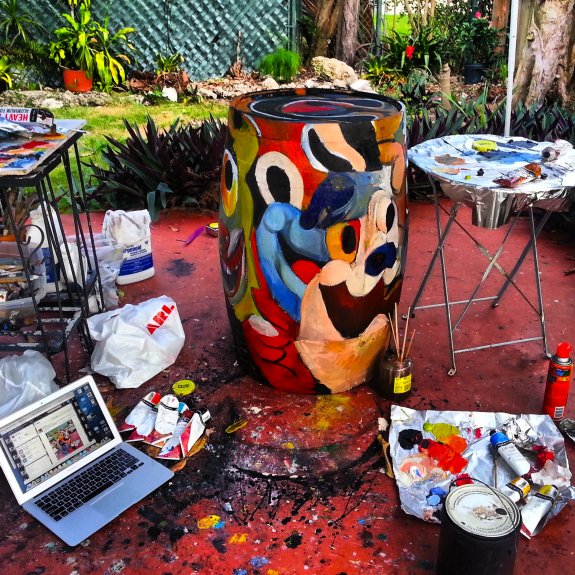
Leveraging its long established art platform in Mexico, Tequila Herradura will be sharing their history, heritage and passion for crafting quality tequila with art aficionados nationwide through the Herradura Barrel Art Program.
For our Tequila, the oak barrel is the final stage in our creative process, the aging period where each handcrafted batch develops its individual character. For 80 professional and emerging artists, these same barrels will serve as departure point for the creation of a unique work of art.
We know how to craft great tequila—the finest in the world. We have selected great artists to make great art. We understand that to create something interesting you need freedom, so we only made one rule: the artists have to use the barrel. How they use it is entirely up to them


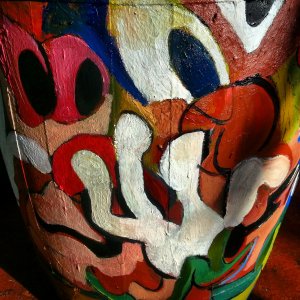
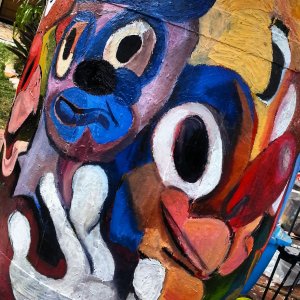

Talk About Joy
Rita Schiano
Word Weavers - First Issue
Last Letter Home
by Celeste Medbery

evil backed into a dark corner
only to realize we are here
simply because we are here
Fighting machine gun bullets with the
breasts of men to claim cratered land
Oh, what I would give to walk on solid
ground instead of mud and duckboards
Tired of war dirt and rain drenched blood
Our rum rations no match for the heavy
stench of death and rotting sandbags
It barely challenges our recent memories
Graves in foreign fields were not on the
minds of those who flocked in the thousands
in hopes to flutter hearts, impress neighbours
and get a crack at the “Almighty Kaiser” himself.
I write with numb and brittle bones tonight
Will you remember me when the time comes
for telegrams, drawn blinds and the columns of
names that will fill the pages of your newspapers?
Image Credit: WW1propaganda.com
Pride.
By Samuel Blondahl
When tasked by the Free Press to write a brief story on Remembrance Day,
I was challenged. I have no direct connection to persons who have served save
one, a grandfather I barely remember. Ralph Dent was a Canadian aircraft
electrician serving with the British Royal Air Force and stationed in Libya and
Egypt during World War II. I do not know his motivations for joining the RAF or
the feelings he might have had regarding the war and his role in it, I can only
speculate.
Libya was a part of the Italian Empire during WWII, and was the Axis
staging ground for planned invasion of Egypt. The North African campaigns were
centered in this region, and this position was crucial to war efforts. Any
airfield would certainly have been an extremely dangerous place to work. I know
that my grandfather suffered shellshock from bombings, and I know that those
effects were not temporary.
As a modern Canadian, I see the world today as being very torn by social
and cultural differences. We are dealing with a completely new kind of war, and
a new understanding of the devastation of conflict. We have a clarity of vision
thanks to media and education that gives us perspective on political and
humanitarian issues. During WWII, most people would not have known anything
about the Nazi camps or the horrors being inflicted upon the innocent. For him,
I speculate that joining the RAF must have been about defending England, the
land of his ancestors. The Dent family has a rich history in England; a Dent
was close to William the conqueror, and to this day lands given by him to my
family bear the name Dent. Our coat of arms even indicates that two knights
served in the War of the Roses for the Lancasters. It is not much of a stretch
to imagine that family pride was a part of my grandfathers reasoning.
As for his feelings on his role there, I have the accompanying photographs he took during his time there to lend me some flash of insight. One shows two men working on a fighter’s engine, pride in their work must have existed else this photograph would likely not have survived. The other photograph shows a man working on a service car engine while two helmeted soldiers sit in the backseat. They all bear smiles and the car bears the bold statement of “Libya or bust!” Pride in their goal must have been present. They intended to overthrow the Italian rule, and bring the region under Allied control.
And so I see in these brief moments great pride. In his friends, his
family, his history, his work, and his goals. For this, I am proud of him. For
such things, I am proud of all who serve and sacrifice. Our peaceful country
would not exist without such dedication, and but for such pride, I would not
live in a world where I do not know anyone well who has had to fight for it.
The world is not perfect. We as a people struggle still with human
rights and suffering. After World War II, a common slogan against genocide was “Never
again!” But such cruelty has happened again, and is happening still. Congo,
North Korea, the Middle East, we still fight wars, and we still fight for what
we believe in. We have not solved the underlying problems of our world, but we
understand them better now I think, we see them more clearly. We have the
experience of our elders and we have the resources of education that they made
possible for us. I believe that we will come to a time of peace through such
clarity. I think I can see now a point in the future when all humankind has
access to education and the benefits of human compassion. On the horizon is the
goal that all those who went before fought to achieve. I am proud of us for
coming this far, and I am proud of the world we are creating.
Remembrance is beautiful, but look forward also on this Remembrance Day.
Consider the possibilities of the future we can achieve. From a Canadian
perspective, war is fought to create peace. To end suffering and provide aid.
To create a free and educated society. I live with the benefits of such a
society, and I believe that someday we all will.
Be proud.
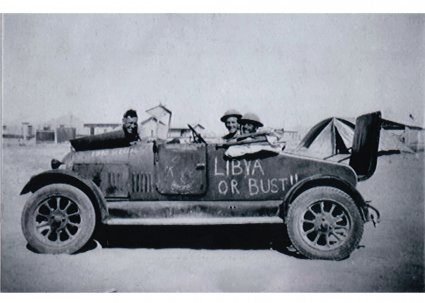
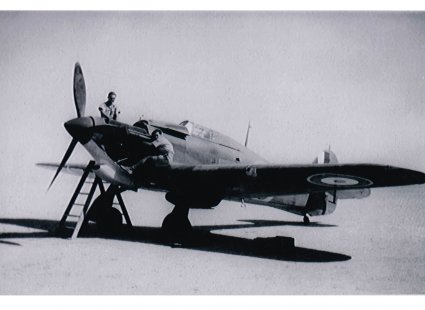
Love
By Kimberly VanderHorst
I
watch the Veterans march each Remembrance Day and feel a surge of pride. I see
how high their chins lift and how steady their gazes are. Despite the weight of
years and the memory of war’s grief lodged in their hearts, they live on, and
they remember.
They
also teach. They teach us that war isn’t just a story history has told us.
When I was
younger, I flinched away from the mere sight of our Veterans, and even more
from the thought of them. They made me feel uncomfortable, because their very
existence reminded me the world is sometimes a hard and hurting place. And the
scope of their lives, what they have done, what they have given, makes mine
feel small in comparison. I felt like they had given me a gift and I’d made
poor use of it.
I used to
feel uncomfortable and ashamed when I saw the Veterans march. But one year that
changed. I watched and felt more than just a strange mingling of pride and
discomfort. I felt a sudden sense of possessiveness as I realized I wasn’t
watching “the” Veterans march, I was watching “our” Veterans march.
I realized
that they are ours, and we are theirs. I realized that while war is hatred
given breath, service in war can be manifestation of love. And now, when I
watch our Veterans march each year,
the discomfort and shame are gone. Instead I feel love, and humility, and a
touch of awe that these amazing men and women gave so much so we could have so
much. I reexamine my life and think of ways I can shape it into something more,
something that honors the example our Veterans have set.
As a
mother, I have battles to fight, sacrifices to make, and love to show forth. As
a wife, I have a comrade in arms whom I would give my all and my everything
for. As a friend, I freely give my time, my patience, my compassion. As a
member of a community, I have talents to share, respect to give, and support to
offer.
Watching
our Veterans march helps me focus on becoming the sort of woman who can watch
without the slightest hint of shame. I want to meet their steady gazes and nod
in quiet acceptance of the gift they have given. I want to honor that gift by
continuing to shape my life with kindness, tolerance, and a desire to give
service whenever and however it is needed.
I can
think of no better way to honor the men and women who have served us, than to
serve each other in such a way that there can be no war among us.
Post title...
Shanghai, China had a big problem moving people between two city airports. The trip was only 20 miles long but would sometimes take 6 hours to make. The city also had a terrible pollution problem. This city turned to a new type of train to help with their problem: Magnetic Levitation Propulsion or maglev.
The train does not use wheels to move! It uses the power of magnets. The train floats above a giant magnet which pushes it along.
This train can travel 431 miles per hour
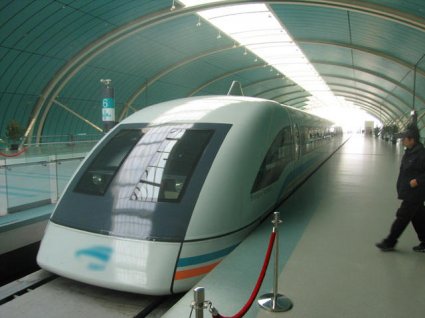
Post title...
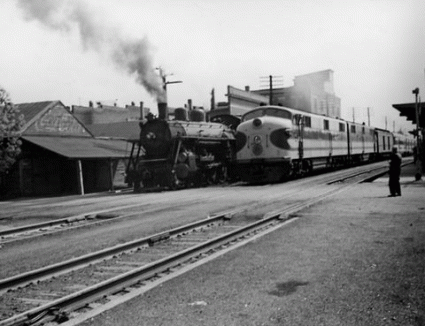
Post title...
Post title...

Wilderness
Cover Page



Praise to God
Pir-O-Murshid Hazrat Inayat Khan
Bowl of Saki